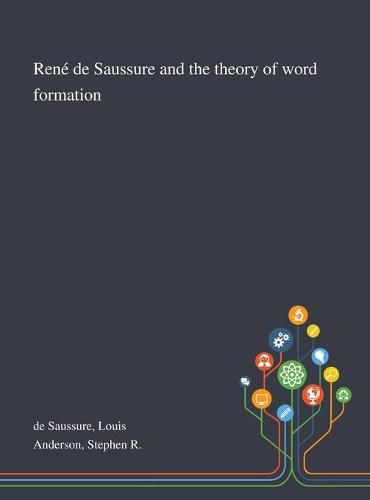Readings Newsletter
Become a Readings Member to make your shopping experience even easier.
Sign in or sign up for free!
You’re not far away from qualifying for FREE standard shipping within Australia
You’ve qualified for FREE standard shipping within Australia
The cart is loading…






This title is printed to order. This book may have been self-published. If so, we cannot guarantee the quality of the content. In the main most books will have gone through the editing process however some may not. We therefore suggest that you be aware of this before ordering this book. If in doubt check either the author or publisher’s details as we are unable to accept any returns unless they are faulty. Please contact us if you have any questions.
This volume presents two works elaborating a general theory of words and their structure written by Rene de Saussure, younger brother of Ferdinand de Saussure. Although originating in Rene de Saussure’s concerns for the structure of Esperanto, these essays are clearly intended to articulate a general account of word formation in natural language. They appear here in the French original with facing English translations, accompanied by some remarks on Rene de Saussure’s life and followed by essays on the Esperantist background of his analysis (by Marc van Oostendorp), the contemporary relevance of his morphological theory (by Stephen Anderson), and the semantic theory of words underlying his analysis (by Louis de Saussure). These two works have remained essentially unknown to the community of scholars in general linguistics since their publication in 1911 and 1919, respectively, although Esperantists have been aware of them. They develop in quite explicit form a theory of what would later be called morphemic analysis, based primarily on data from French (with some material from German and English, as well as occasional examples from other Indo-European languages). In its fundamental aspect, Rene’s view of word formation differed significantly from that of his brother, who saw the structure of complex words as revealed not through their decomposition into smaller atomic units but rather in the relations between words, relations which could be presented in analogical form and which anticipate rule-based theories of morphological structure. The contrast between the two brothers’ views thus anticipates basic issues in current theorizing about word structure. This work was published by Saint Philip Street Press pursuant to a Creative Commons license permitting commercial use. All rights not granted by the work’s license are retained by the author or authors.
$9.00 standard shipping within Australia
FREE standard shipping within Australia for orders over $100.00
Express & International shipping calculated at checkout
This title is printed to order. This book may have been self-published. If so, we cannot guarantee the quality of the content. In the main most books will have gone through the editing process however some may not. We therefore suggest that you be aware of this before ordering this book. If in doubt check either the author or publisher’s details as we are unable to accept any returns unless they are faulty. Please contact us if you have any questions.
This volume presents two works elaborating a general theory of words and their structure written by Rene de Saussure, younger brother of Ferdinand de Saussure. Although originating in Rene de Saussure’s concerns for the structure of Esperanto, these essays are clearly intended to articulate a general account of word formation in natural language. They appear here in the French original with facing English translations, accompanied by some remarks on Rene de Saussure’s life and followed by essays on the Esperantist background of his analysis (by Marc van Oostendorp), the contemporary relevance of his morphological theory (by Stephen Anderson), and the semantic theory of words underlying his analysis (by Louis de Saussure). These two works have remained essentially unknown to the community of scholars in general linguistics since their publication in 1911 and 1919, respectively, although Esperantists have been aware of them. They develop in quite explicit form a theory of what would later be called morphemic analysis, based primarily on data from French (with some material from German and English, as well as occasional examples from other Indo-European languages). In its fundamental aspect, Rene’s view of word formation differed significantly from that of his brother, who saw the structure of complex words as revealed not through their decomposition into smaller atomic units but rather in the relations between words, relations which could be presented in analogical form and which anticipate rule-based theories of morphological structure. The contrast between the two brothers’ views thus anticipates basic issues in current theorizing about word structure. This work was published by Saint Philip Street Press pursuant to a Creative Commons license permitting commercial use. All rights not granted by the work’s license are retained by the author or authors.